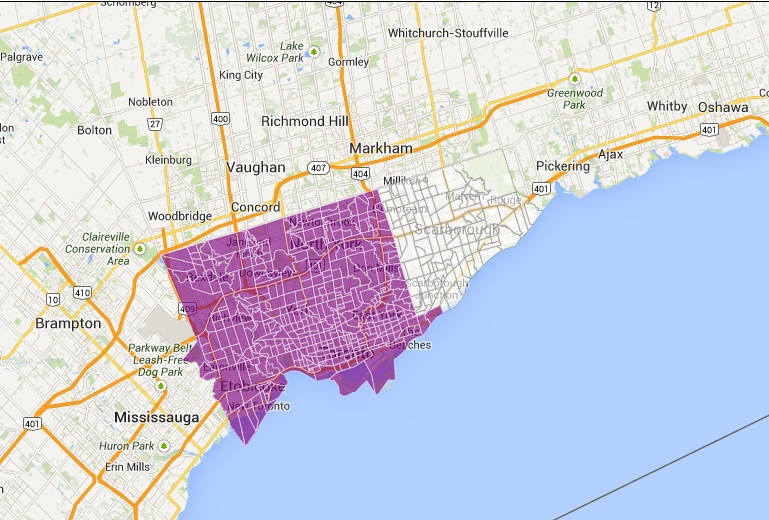Watch: UN High Commissioner on Refugees discusses ongoing crisis in Syria

Syria’s protracted conflict reached a dubious milestone Tuesday: The number of Syrians who’ve fled the country thanks to 30 months of violence has passed the 2-million mark.
That’s more than double the number of refugees a few months ago. It doesn’t take into account more than 4 million internally displaced people – out of their homes, but still within Syria’s borders.
It’s the populations of Saskatchewan and Manitoba combined. Or about the population of Houston, Texas.
As of Tuesday, the number of Syrians the United Nations considers “persons of concern” would take up most of Toronto:
And a huge swath of B.C.’s Lower Mainland:
- Train goes up in flames while rolling through London, Ont. Here’s what we know
- Budget 2024 failed to spark ‘political reboot’ for Liberals, polling suggests
- Wrong remains sent to ‘exhausted’ Canadian family after death on Cuba vacation
- Peel police chief met Sri Lankan officer a court says ‘participated’ in torture
It may not be as sexy a topic as the possibility of American Tomahawk missiles bombarding President Bashar al-Assad’s chemical weapons arsenal. But the United Nations High Commission on Refugees hastened to note that, as humanitarian crises go, this one’s a biggie.
Syria has become “a disgraceful humanitarian calamity with suffering and displacement unparalleled in recent history,” High Commissioner António Guterres said in a statement Tuesday.
Angelina Jolie is also concerned.
“The world risks being dangerously complacent about the Syrian humanitarian disaster,” the actress and UNHCR special envoy said in a statement. “If the situation continues to deteriorate at this rate, the number of refugees will only grow, and some neighbouring countries could be brought to the point of collapse,”
More to the point: They need cash.
The UN body says it has less than half the funds required to address this growing population’s most basic needs (while it’s leaning heavily on donor nations, individuals are also urged to contribute).
Without a quick and sizable cash infusion, “we will then have to take very difficult decisions in terms of priorities, what we do and what we don’t do,” UNHCR spokesman Dan McNorton said in a phone interview.
“It could be down to what type of basic medical services are provided, what level of support – both inside and outside camps – we’re able to provide.”
The problem is geopolitical as well as humanitarian: The Syrians streaming across the border are fleeing to countries not much more stable than their own – ones you wouldn’t normally think of as safer havens. Iraq is seeing elevated levels of violence, most recently in a string of deadly explosions across the country; Egypt is roiling in the after-effects of a military coup and subsequent crackdown. And the deluge of refugees – most of them settling in cities and towns rather than refugee camps – is making things particularly tense in parts of Turkey and Lebanon.
“That has had a great impact on the communities in those countries and has placed a great pressure on many aspects of their society,” McNorton said. “The issue of stability in the region is certainly something we are concerned about.”
The UN commission plans to meet with representatives of Syria’s neighbours this week to talk about just that.
And while the world waits to see whether U.S. Congress will support President Barack Obama’s vow to punish Assad’s use of chemical weapons, some analysts argue the limited scope of his hypothetical operation may not help displaced Syrians much: It likely won’t unseat Assad or end the bloody, escalating clashes that have riven the country.
The UNHCR’s McNorton wouldn’t speculate on what a military strike on Assad might mean for a refugee population whose numbers have risen along with military rhetoric over the past couple of weeks.
“That’s not really for us to speak to,” he said. Their focus is the immediate needs of refugees, “rather than getting into any speculation about what might happen if other actions are taken.”
Track the evolution of Syria’s refugee crisis in the interactive map below: Use the arrows to move from month to month. Hover over a circle or a point on the line chart for details, and double-click to zoom in.





Comments